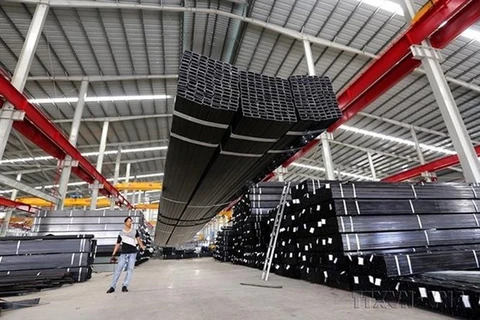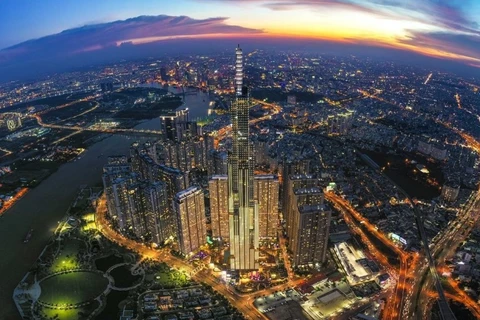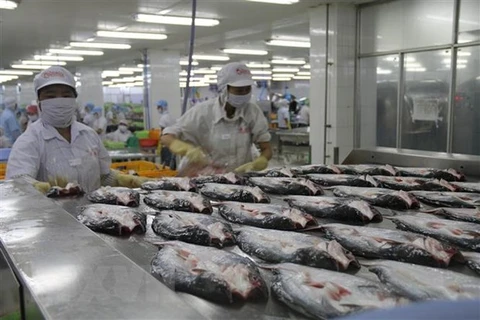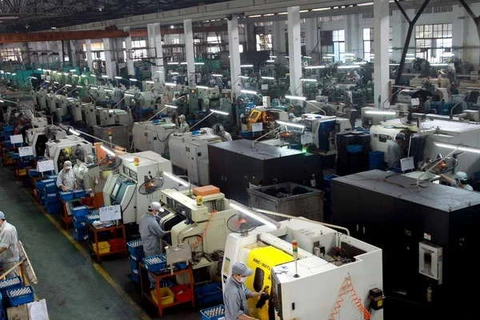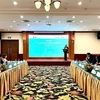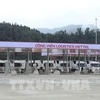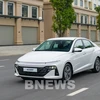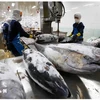The report “Vietnam at a glance”, published by HSBC Vietnam on May 13, stated that Vietnam's external motivation continues to shine thanks to the booming electronics industry and stable FDI inflows. However, HSBC experts noted that Vietnam still needs to be vigilant as global demand shifts coupled with supply chain disruptions in China that may affect export growth.
Exports and FDI inflows rebound
According to HSBC, since reopening, Vietnam's external dynamics are in full swing. Exports in April grew vigorously thanks stronger than expected electronics exports. After recording a strong growth rate of 13 percent year-on-year in the first quarter of 2022, April's exports increased to 25 percent year-on-year. Although growth was comprehensive across all categories, nearly 40 percent of the growth was attributed to a strong increase in electronics orders at 33 percent year-on-year.
With a starting point as an exporter of low-value apparel and footwear, over time, Vietnam has demonstrated its ability to rise up in the supply chain. It is now an important manufacturing hub in the technology industry. Electronic exports hit a record 108 billion USD in 2021, equivalent to 32 percent of the total exports. This figure in 2000 was less than 1 billion USD, equivalent to 5.5 percent of total export turnover.
In addition, according to HSBC experts, much of the success in tech is thanks to Samsung’s multi-year FDI in Vietnam, with around 18 billion USD being poured into Vietnam over the past two decades.
Currently, Samsung is running six factories and one research and development (R&D) center, including two smartphone factories in the north of Vietnam that produce half of Samsung's smartphone output. As a result, Vietnam's smartphone market share globally has increased significantly.
In addition to Samsung smartphones, Vietnam's laptop market share in the world has gradually increased, surpassing Malaysia to become the main producer in the Association of Southeast Asian Nations (ASEAN).
Meanwhile, Vietnam has also emerged as a supplier of microprocessors/controllers (although products assembled in Vietnam are often lower-value microprocessors used in many electronic products). Since 2006 this result has been reflected in Intel's one-billion-USD investment in an assembly and testing facility in Vietnam.
The success of Samsung has led other tech giants to shift their supply chains to Vietnam. Not only familiar investors like Samsung that continue to pour more investment in Vietnam, but three Apple product assemblers, namely Foxconn, Luxshare and Goertek, have all announced substantial investment plans to ramp up production capacity in Vietnam.
An HSBC expert said Vietnam is ascending, and has successfully transformed into the world's technology factory, gaining more market share in the export of smartphones and mciroprocessors. Despite the local disruption caused by the pandemic, Vietnam continues to benefit from stable FDI inflows from technology giants, both familiar corporations and new investors.
However, HSBC experts also warned that the supply chain disruptions in China make it significantly more difficult for Vietnamese manufacturers to secure raw material inputs for future exports.
Nearly 30 percent of Vietnam's raw parts imports come from China, mainly in the fields of electronics (30 percent) and machinery and equipment (22 percent). It follows that any disruption in the supply and transportation in China will hinder Vietnam's opportunity for export growth in the future.
Besides exports, Vietnam continues to benefit from its open-border strategy. April saw a large number of tourists returning to Vietnam while household consumption continued to recover.
Since officially opening the border on March 15, Vietnam welcomed more than 100,000 tourists in April, three times higher than in March./.

